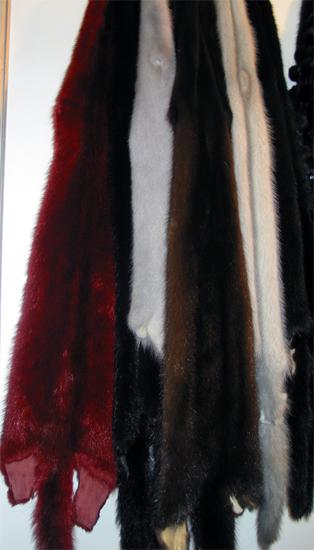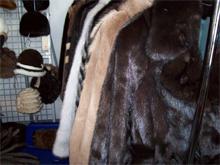How to store natural fur: humidity, protection, and long-term care tips.
How to Properly Store Natural Fur
 Typically, when a person decides to buy a natural fur coat, they understand that this purchase is not for just one, or even two, seasons.
Typically, when a person decides to buy a natural fur coat, they understand that this purchase is not for just one, or even two, seasons. After all, a well-tailored fur coat can serve its owner for 7 to 30 years, depending on the type of fur it is made from. That is why, in the past, a fur coat could serve more than one person and was even passed down as an heirloom. But for a coat to faithfully last for its full intended lifespan, you need not only to wear it carefully, but also to know how to care for the fur.
After all, a well-tailored fur coat can serve its owner for 7 to 30 years, depending on the type of fur it is made from. That is why, in the past, a fur coat could serve more than one person and was even passed down as an heirloom. But for a coat to faithfully last for its full intended lifespan, you need not only to wear it carefully, but also to know how to care for the fur.Today, the days are gone when fur coats were recommended to be carefully hung in a closet each year, wrapped in polyethylene, and packed with naphthalene. Recent advances in the fur industry have developed new methods. The most effective of these is to send the coat into "summer hibernation" in a special refrigerated chamber. There, a temperature of 4 to 7 degrees Celsius is consistently maintained, which is most beneficial for the fur and quite uncomfortable for fur pests—moths and hide beetles. Such chambers, where you can leave your furs for the summer, are now opening in many major cities across Russia. And the owners of this business note that the service enjoys steady demand from owners of expensive fur coats.
But if you do not have such a wonderful opportunity, you can preserve a fur garment at room temperature as well. The main thing is that the room where it is stored is not too hot (around 20 degrees Celsius). If the air temperature rises above 25 degrees, the leather will become stiff, lose its flexibility, and the fur may dry out. In addition, the air humidity should be kept within 60–70%. If it is lower, the fur may again dry out; if higher, mold can develop.
Before hanging a fur coat for storage, be sure to inspect it: during the season, some damage may have occurred—abrasions, small tears in the leather or seams, loss of luster, or the appearance of a stain. In this case, it makes sense to take the coat to a specialized cleaning service first, where it will be restored using special agents.
Finally, when everything is prepared, for better preservation you should put a dark, dense cover over your fur coat or short coat made of genuine leather (but not polyethylene, which does not let air through). And of course, do not fold fur—it should be stored only in a vertical position. Summer will pass unnoticed, and next winter the coat will once again be ready to keep you warm.